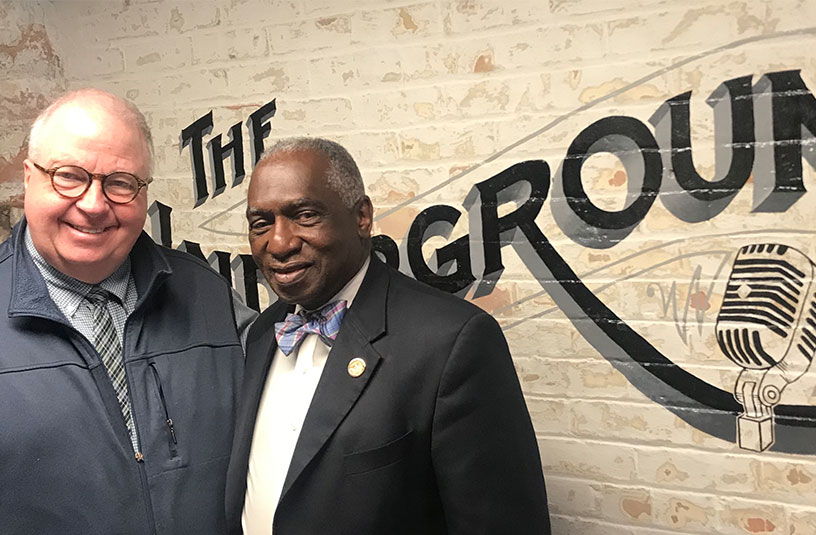Adaptability
That one word captures the essence of fiscal year 2020.
When the fiscal year began, we welcomed STEM Action Center to our department as our seventh division. The STEM mission complements the missions of our other divisions, which all have programs that focus on educating children.
Along with an expanding department, we also started preparing for a new home at the Capitol complex after legislators approved funding for a new state museum of history and art. The new building, which could eventually house most of the staff who currently work in the Rio Grande Depot, would replace the State Office Building that is slated for demolition. Along with a museum and offices, the new building would provide much-needed secure storage for the collections of historic artifacts and fine art.
Throughout the department, divisions and their staff had ambitious plans. Exhibitions would be increasingly inclusive, history discussions would capture an even broader spectrum of voices. We would celebrate the contributions of Native Americans and new immigrants. Our preservation efforts would include a robust campaign to protect archaeological treasures.
Along with new initiatives divisions continued to offer important professional development opportunities. A larger grant pool provided needed financial stability to artists, theaters, museums, and more.
Many of these projects launched soon after the new fiscal year began, and all of them had solid momentum. Then, the pandemic hit, followed immediately by a 5.7 earthquake in the Salt Lake valley.
Throughout the department, this required adaptability from everyone. Conferences planned for the spring shifted to virtual platforms. The History Day competition completely overhauled their judging to ensure the competition could continue. Our art galleries launched online exhibitions.
While many programs found ways to adapt to a virtual world, others found themselves on the front lines of the COVID-19 and earthquake response. UServeUtah organized a massive donation drive for personal protective equipment. Arts & Museums organized a working group to help cultural organizations navigate the crisis and, eventually, distribute millions of dollars in emergency grants. The State Historic Preservation Office compiled a detailed report on the earthquake damage to historic buildings, especially in Magna. Indian Affairs helped organize multiple projects to provide assistance to the Navajo Nation, one of the areas hardest hit by the virus.
Amidst it all, Multicultural Affairs found themselves leading — with a team of four full-time employees — multi-pronged, statewide initiatives to address the significant impact of COVID on underserved communities and the issues of race and equality that came to the forefront following the death of George Floyd.
As the fiscal year ended, the country was still struggling to contain the COVID-19 virus. As a department, we will continue to help those we serve wherever possible. As you read this annual report, recognize that it is, in many ways, only a partial snapshot of our response these crises as well as our aspirations to make Utah a more creative and welcoming place.
To preserve, foster, and share Utah’s diverse cultural heritage for present and future generations by encouraging and celebrating intellectual, creative, and civic contributions statewide.
Fiscal year 2020 HIGHLIGHTS

Muse Magazine
A semi-annual celebration of the people and organizations that anchor the state's culture. Overseen by Ellen Weist Fagg, formerly of The Salt Lake Tribune, The magazine published its second and third issues in fiscal year 2020. It will publish its fourth issue in October 2020.
Speak Your Piece Podcast
Hosted by Senior Public Historian Brad Westwood, "Speak Your Piece" launched in December 2019. The podcast focuses on interviews with historians, curators, preservationists and others about Utah history. Many episodes explore stories seldom heard and helps bring a new perspective on a wide range of topics.
Performance Measures
Percentage of division programs that are engaged in at least one collaborative project annually. GOAL: 66%
Performance audits or evaluations of department process or systems completed annually. GOAL: 2
Performance audits or evaluations of department process or systems completed annually. GOAL: 6
Budget
The Department of Heritage & Arts includes seven division and approximately 150 employees who strengthen the state through grants, professional development, and education.
